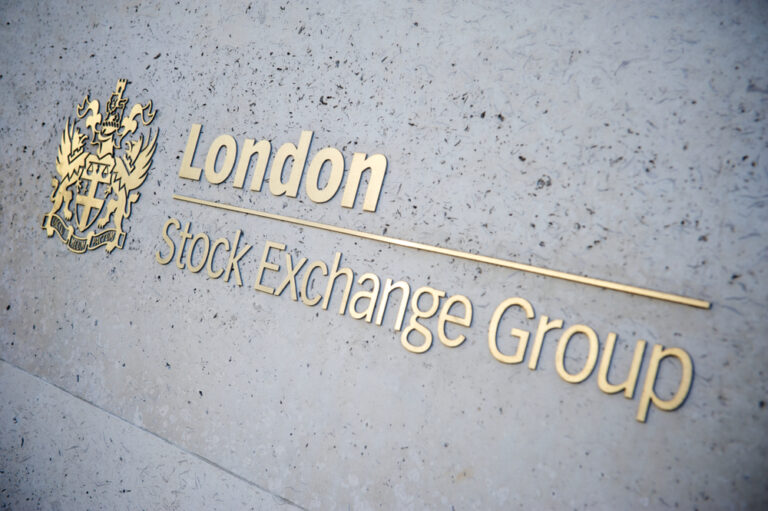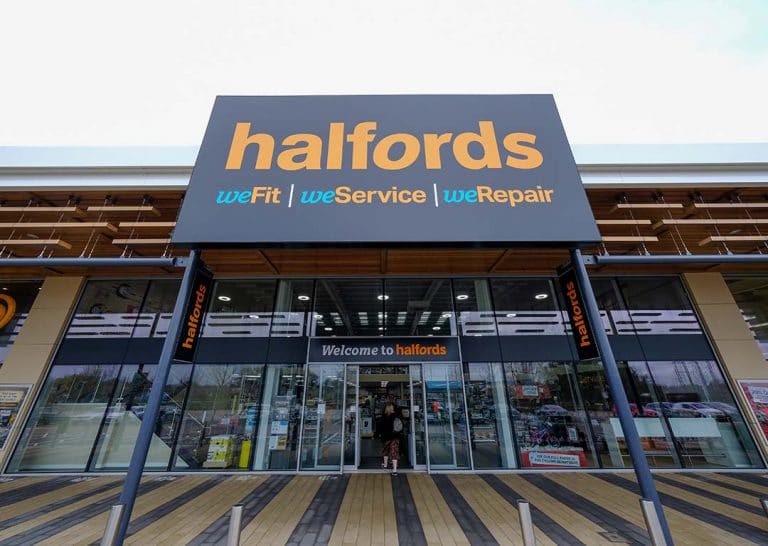Yesterday morning’s Trading Update from the Harworth Group (LON:HWG) reported a strong demand for its building plots from a multitude of house developers.
The group is a leading UK sustainable regenerator of land and property for development and investment which owns, develops and manages a portfolio of over 14,000 acres of land on over 100 sites located throughout the North of England and Midlands.
It specialises in the regeneration of large, complex sites, in particular former industrial sites, into new Industrial & Logistics and Residential developments to create susta...
Helium One announces delays to Colorado drill programme
Helium One Global shares fell on Wednesday after announcing a delay to its drilling operations in Las Animas County, Colorado, due to adverse drilling conditions.
The company is implementing measures to ensure continued site access during challenging winter conditions. Road improvements, including gravelling operations for access routes to both the Jackson-31 and Jackson-4 well locations, are progressing despite severe winter weather affecting much of the United States.
Helium One shares fell around 7% in early trade before recovering.
The company has adjusted its drilling schedule in response to anticipated adverse weather conditions. Rig mobilisation, originally planned for early February, is now scheduled for the week of February 10.
The drilling campaign will commence with the Jackson-31 SENW 3054 well, followed by the Jackson-4 L4 3154 well. Three additional approved wells are included in the campaign, with their drilling sequence to be determined following the completion of Jackson-4.
Helium One investors who remember long drawn-out delays to their African operations should be encouraged that delays in the US are only due to the weather.
Development of the Pinon Canyon processing plant continues to advance, with ongoing permitting and engineering work proceeding as planned. The company maintains its target for initial gas production in the first half of 2025.
The update follows an announcement from project partner Blue Star Helium (ASX: BNL), which detailed the operational adjustments being made to ensure the project’s successful execution during challenging weather conditions.
AJ Bell assets under management soar as customers numbers grow
Investment platform AJ Bell has announced robust growth in its first quarter ending 31 December 2024, with record assets under administration and continued expansion of its customer base.
The company’s platform business saw total customer numbers rise to 561,000, marking a significant 16% increase over the past year and a 4% growth in the quarter.
Within this, the direct-to-consumer segment demonstrated particularly strong momentum, growing by 20% year-on-year to reach 387,000 customers, while advised customers increased by 8% to 174,000.
AJ Bell is still a long way behind Hargreaves Lansdown’s nearly 2 million active users, but it is catching up.
Assets under administration reached a record £89.5 billion, representing a 17% increase compared to the previous year and a 3% rise in the quarter. This growth was supported by strong inflow performance, with gross inflows reaching £3.6 billion in the quarter, up from £2.7 billion in the same period of 2023. Net inflows also showed improvement, rising to £1.4 billion from £1.3 billion in the previous year.
The company’s investment management division, AJ Bell Investments, demonstrated exceptional growth with assets under management climbing to £7.2 billion, marking a substantial 38% increase over the year and a 6% rise in the quarter. Net inflows for this division remained stable at £0.4 billion, matching the performance of the previous year.
“I am pleased to report a strong start to the financial year as we continued to attract thousands of new customers and increased levels of assets, resulting in a record 561,000 platform customers and £89.5 billion of platform assets under administration,” said Michael Summersgill, Chief Executive Officer at AJ Bell
“AJ Bell Investments continues to perform exceptionally well with quarterly net inflows of £0.4 billion resulting in total AUM surpassing £7 billion for the first time.”
FTSE 100 shruggs off US tech declines with broad rebound
The FTSE 100 rebounded on Tuesday as London’s leading index shrugged off the emergence of DeepSeek in a broad rally led by UK-centric stocks.
A minor rebound in US tech shares on Tuesday went a long way toward lifting sentiment globally as the fallout from sharp declines in stocks such as Nvidia looked to be contained for now.
“Panic on Wall Street sent US tech stocks into a deep slump yesterday and prompted a big debate about whether the AI infrastructure winners will now be dethroned,” said Russ Mould, investment director at AJ Bell.
“Nvidia crashed by nearly 17% which sounds dramatic but only pulled the stock back to October 2024 levels. Someone who has owned Nvidia shares since before summer last year should still be sitting on decent gains, even after yesterday’s pullback.
“It looks like the Wall Street bloodbath was short-lived as Nvidia’s shares are trading 1.4% higher in pre-market trading and futures prices point to small gains for both the Nasdaq and S&P 500 today.”
A slight uptick in sentiment from the US coupled with interest rate traders’ pricing of more UK interest rate cuts in 2025 created the perfect backdrop for a rally in UK-centric stocks.
A softer UK economic outlook is translating into a shift in expectations for the number of interest rate cuts this year, which is feeding through into interest for companies reliant on the UK for income.
Housebuilders were a big beneficiary of hopes of more interest rates, with Barratt Redrow and Persimmon rising over 2%. Howden Joinery rose 3% in sympathy.
JD Sports jumped 4% as bargain hunters picked up the stocks after a sharp fall following a profit warning early in 2025.
A broker upgrade to ‘buy’ for ‘hold’ for Spirax sent shares in the engineering group 4% higher.
Halfords share ride high after strong trading leads to profit guidance increase
Halfords Group has upgraded its profit expectations for FY25, now projecting underlying profit before tax of £32m to £37m, following improved trading performance and strategic progress in recent months.
Halfords shares were 20% higher at the time of writing.
The retailer saw positive like-for-like sales growth in Q3 across both its Retail and Autocentres divisions. The company’s cycling segment performed particularly well, achieving 13.1% like-for-like sales growth in December, driven by strong Christmas sales.
Meanwhile, its Autocentres division showed robust performance in services and maintenance, with consumer garage sales growing by 10.3% in Q3.
Recent colder weather has further boosted performance, with motoring products seeing a 5.5% like-for-like sales increase in January. The company also reported better-than-expected foreign exchange rates for the cost of goods sold in FY25 and lower freight costs than previously anticipated.
Looking ahead to FY26, Halfords, like many retailers, faces an estimated £23m increase in direct labour costs due to minimum wage and national insurance changes announced in the Autumn Budget. The company is developing mitigation strategies to address these challenges, which will be detailed alongside its FY25 results due later this year.
FTSE 100 slips as Chinese AI firm DeepSeek rattles US tech
Global financial markets started the trading week contending with a number of fresh concerns, including the first instalment of unpredictable foreign policy under Trump 2.0 after the new president took aim at Colombian goods. Markets were also rattled by a US tech sell-off sparked by developments in China.
Traders were monitoring sharp declines in US futures amid concerns that Chinese AI firm DeepSeek could give US counterparts a run for their money, threatening an upset in the AI-induced rally that has propelled US equities higher.
S&P 500 futures were down over 2% at the time of writing as traders reacted to the strength of DeepSeek’s AI models which appear to have higher levels of efficiency, both in terms of costs and achieving desired results with less complex chips.
“The small Chinese research and engineering firm DeepSeek’s AI Chatbot has proved so popular it jumped into the top spot on US iOS App, usurping Open AI’s ChatGPT,” said Susannah Streeter, head of money and markets, Hargreaves Lansdown.
“DeepSeek threatens to spook big tech and has already sent shivers through Silicon Valley by releasing details about how to build large language models more cheaply using low-cost Chinese chips.”
The culmination of Trump tariff actions, worries about the health of the AI rally, and a rising pound curtailed demand for the UK’s risk assets on Monday.
“Investors are navigating global trade while a slightly stronger pound compared to recent weeks is holding back multinationals due to the effect on their overseas earnings,” Susannah Streeter explained.
Trump’s erratic approach to Colombia and the use of tariffs were felt in UK stocks on Monday as sentiment took a hit.
That said, the UK’s lack of exposure to technology was a blessing, and the declines in the FTSE 100 were far less severe than in US stocks.
London’s leading index slipped 0.25%, led lower by miners and the tech-heavy Scottish Mortgage Investment Trust.
Miners were down heavily after reports BHP would put its plans to acquire Anglo American on hold. Anglo shares sank 5%.
Defensive stock highlighted the risk-off tone to trade with Severn Trent and British American Tobacco gaining 4% and 2%, respectively.
AIM movers: Good Energy recommends bid and Ondine Biomedical cash injection delayed
Energy supplier and energy efficiency services provider Good Energy (LON: GOOD) is recommending a 490p/share bid from Esyasoft. That values Good Energy at £99.4m. Esyasoft is expert in smart grid technology and is attracted to Good Energy because of its transformation into an energy-as-a-service business and the potential to roll out some of its operations, such as 49%-owned Zapmap EV apps and services, outside of the UK. The financial backing f a larger company will help Good Energy grow faster. Major shareholder Ecotricity has committed to accepting the bid. The share price jumped 21.5% to 480p.
Rapid diagnostic tests developer Abingdon Health (LON: ABDX) has been awarded £800,000 by UK Research and Innovation as part of total project funding of €5m to develop a new intervention for malaria elimination. The project will last 24 months. The share price increased 9.68% to 8.5p.
Human challenge trial services provider hVIVO (LON: HVO) has signed a letter of intent with ILiAD Biotechnologies to conduct a large-scale phase 3 human challenge trial for a potential whooping cough vaccine, BPZE1. The trial will start in the second half of 2025. No contract value is mentioned but it should be worth more than £10m. The share price recovered 8.93% to 21.35p.
Property developer Paul Elliott has been appointed as a director of biomass technology developer Active Energy Group (LON: AEG). He has been involved in the turnarounds of distressed assets. Accountant Pankaj Rankaj has joined the board as a non-executive director. The share price rose 9.09% to 0.3p.
Offshore energy market services Tekmar Group (LON: TGP) has won a new offshore wind energy contract worth £5m. Tekmar will supply its Generation 10 cable protection system and associated products. This contract will be completed in 2025. The share price improved 8.7% to 6.25p.
FALLERS
HCA Healthcare has committed to investing $4m in Ondine Biomedical Inc (LON: OBI) at $0.1057/share. This should provide enough cash to cover requirements until the fourth quarter of 2025. However, settlement of a proposed investment made by a Canadian investor last September has been delayed. The share price slipped 11.8% to 11.25p.
Kidney disease test developer Renalytix (LON: RENX) expects interim revenues to be $1.3m for the kidneyintelIX.dkd test. Monthly sales per representative have trebled to 24. Further new adopters are expected to offer the test. The share price declined 6.67% to 10.5p.
Vela Technologies (LON: VELA) reports a decline in the value of its investment portfolio from £2.95m to £2.62m in the fourth quarter of 2024. The largest fall in value was in Tribe Technology (LON: TRYB) following the announcement of its intention to leave AIM. Vela is taking opportunities to sell some investments, so that the cash can be reinvested in new investments. Investee company Community Social Investment has shares in WeCap, which plans to list in the US and the shares will be distributed to the shareholders of the investee company. This could provide some upside. The share price fell 7.14% to 3.25p.
Coral Products (LON: CRU) interims were in line with previously downgraded expectations with revenues declining from £17.2m to £15.8m and it fell into loss. The plastic products manufacturer has halved the interim dividend to 0.25p/share. Costs have been reduced and there were exceptional reorganisation costs of £676,000. An underlying loss of £400,000 is forecast for the full year, suggesting breakeven in the second half. Manufacturing problems have been resolved. The share price dipped 3.85% to 6.25p.










